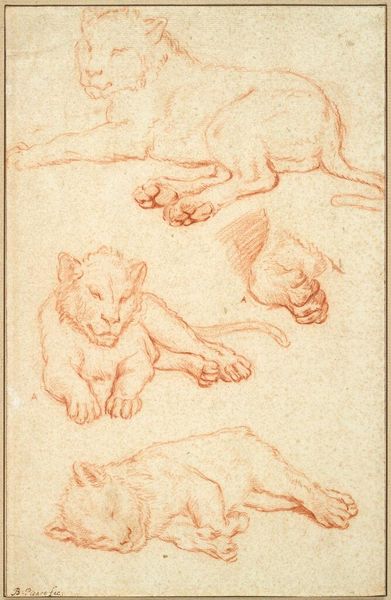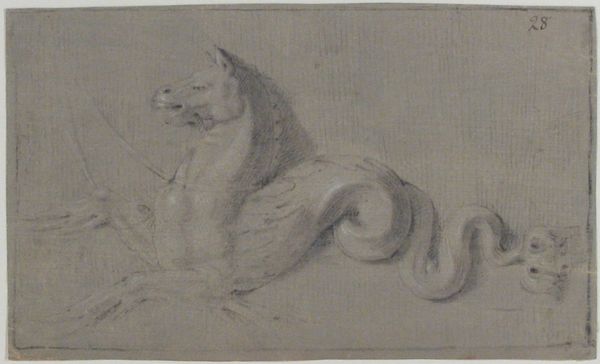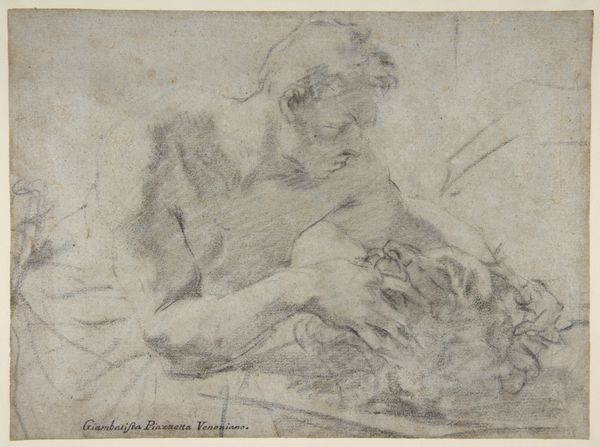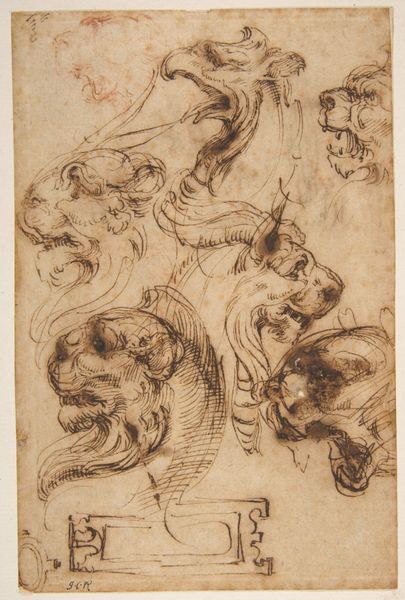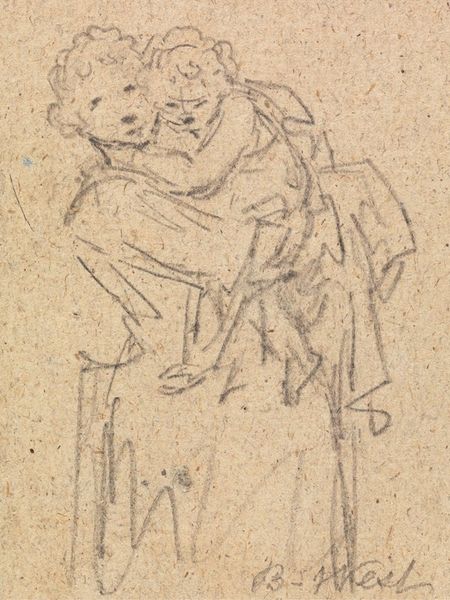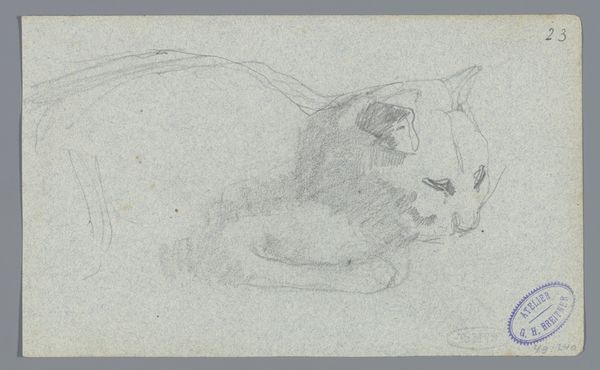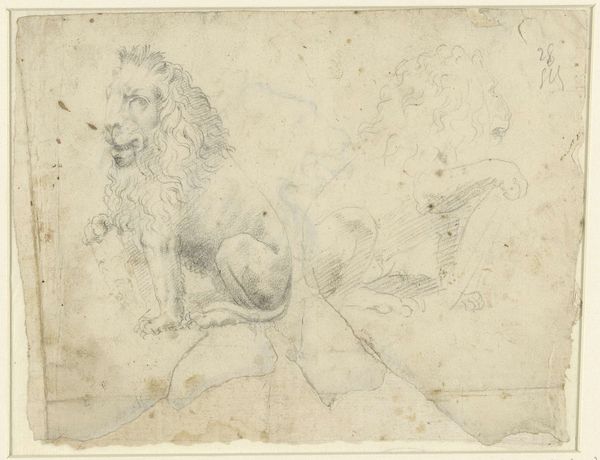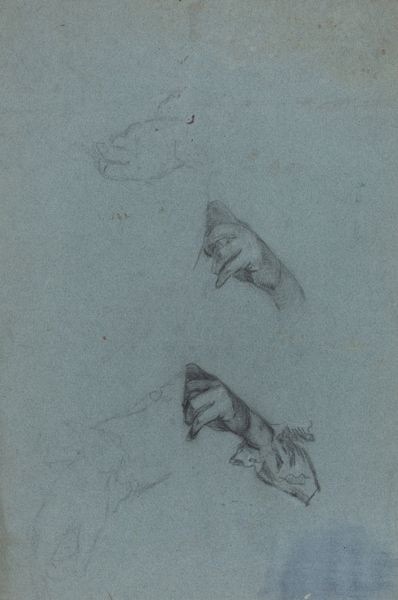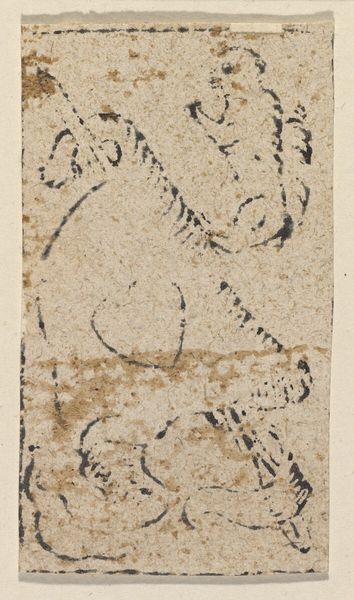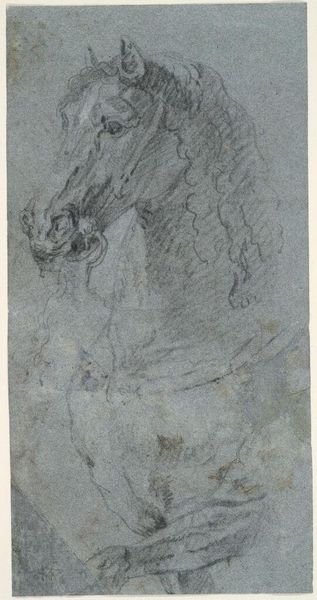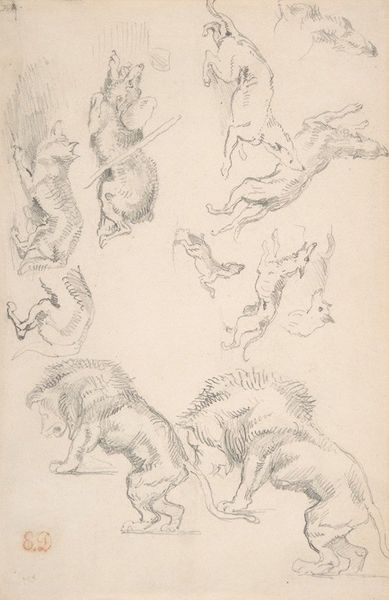
drawing, paper, charcoal
#
portrait
#
drawing
#
charcoal drawing
#
figuration
#
paper
#
genre-painting
#
charcoal
#
rococo
Copyright: Public Domain: Artvee
Curator: Ah, yes. Giovanni Domenico Tiepolo’s drawing, dating sometime between 1727 and 1804. It's called "Three Dogs." Executed in charcoal on paper. Editor: Well, my first thought? The sheer tenderness radiating from this seemingly simple sketch is astonishing. It's as though Tiepolo captured not just the likeness of these three pups but their very souls, each with its own little melancholic story etched in charcoal. Curator: It’s interesting that you use the word "melancholic" as Domenico Tiepolo was active during the Rococo movement, generally recognized for its levity and playfulness, even its superficiality. So where might we find the social commentary and political positioning within his art, as filtered through these three little mutts? Editor: Absolutely. Looking at Tiepolo's era through a lens of systemic power imbalances, consider that the elite's leisure activities often depended on exploitation. So these seemingly docile dogs, perhaps they're subtly hinting at enforced cuteness as a parallel to the suppression of dissent under a gilded cage of aristocracy? After all, the Rococo period glossed over vast social disparities, relying on enslaved labor and indentured servitude to fund that famous carefree opulence. Even if unintentional, it echoes! Curator: Well... these dogs are a far cry from Marie Antoinette’s pampered pooches! In many ways, it speaks to Tiepolo’s extraordinary sensitivity. Take for example the light—how softly it lands upon the dogs’ fur. I detect also the Rococo ideals present, just approached in an innovative manner. But yes—there's a sense of quiet observation, rather than glorification here. Perhaps these dogs were street dogs, just making their way. I do think that Tiepolo chose not to ennoble them through idealization, rather they remain real and accessible. Editor: Indeed. Thinking critically, can we divorce depictions of animals from their implicit allegorical uses? Historically, dogs have been deployed to signal fealty, loyalty, sometimes even aggressive territoriality. Yet here, despite likely being commissioned or created within a patronage context, we observe nuanced vulnerability. Are we then seeing proto-empathy? Or just deft observational skill masking underlying dominant ideology? The composition itself almost seems to whisper tales from fringes rather than announce grand narratives celebrated inside aristocratic drawing rooms. Curator: Beautiful. It’s a small image. But in that, contains something monumentally tender and very telling. Thank you, Editor, as always, you bring light into my sight! Editor: The delight's mutual. And truly, looking closely reveals layers; prompting deeper reflection on hidden societal dynamics—even from unassuming charcoal pups.
Comments
No comments
Be the first to comment and join the conversation on the ultimate creative platform.
